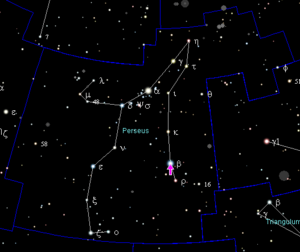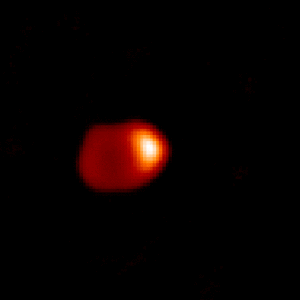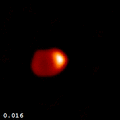Algol facts for kids
Algol, also known as the Demon Star, is a very bright star in the Perseus constellation. It's special because its brightness changes regularly. This happens because it's not just one star, but a system of three stars that orbit each other.
Algol was one of the first stars discovered to change its brightness. It was also the first star of its kind (an "eclipsing binary") to be found.
Contents
What is Algol?
Algol is a system of three stars: Algol A, Algol B, and Algol C.
- Algol A is the largest and brightest star.
- Algol B is a bit dimmer and orbits very close to Algol A.
- Algol C orbits further away from the pair of A and B.
Why Does Algol Change Brightness?
Algol's brightness changes because Algol B passes in front of Algol A. This is called an eclipse. When the dimmer Algol B blocks some of the light from the brighter Algol A, the total light we see from Algol drops.
This eclipse happens regularly, about every 2 days, 20 hours, and 49 minutes. The dimming lasts for about 10 hours. After the eclipse, Algol becomes bright again until the next eclipse.
How Close Are the Stars?
Algol A and Algol B are very close to each other. They are only about 0.062 astronomical units (AU) apart. An astronomical unit is the distance from the Earth to the Sun. Because they are so close, Algol A is slowly pulling gas away from Algol B.
Where is Algol in the Sky?
Algol is part of the Perseus constellation. You can find it by looking for the constellation Perseus in the night sky. It's one of the brightest stars in that group.
Images for kids
-
This graph shows how Algol's brightness changed over time, as recorded by NASA's Transiting Exoplanet Survey Satellite (TESS). You can see the dips in brightness when the stars eclipse each other.
See also
 In Spanish: Algol para niños
In Spanish: Algol para niños








